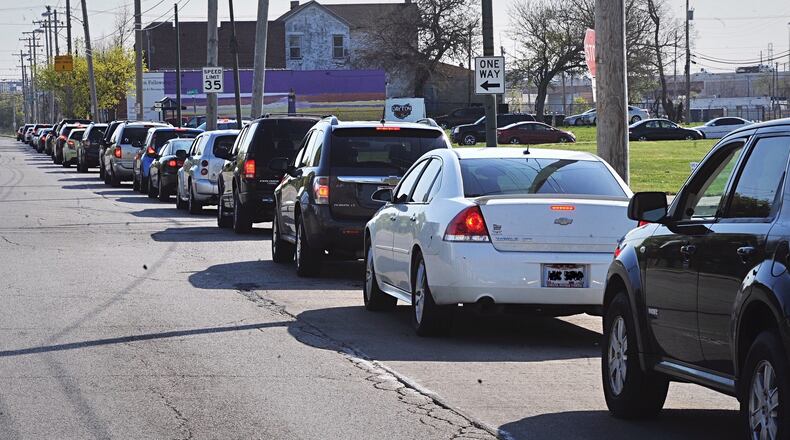Total nonfarm payroll employment fell with the destruction of 20.5 million jobs in April, and the unemployment rate rose to 14.7 percent, the U.S. Bureau of Labor Statistics reported in its monthly report Friday.
“The changes in these measures reflect the effects of the coronavirus (COVID-19) pandemic and efforts to contain it,” the Labor Department said. “Employment fell sharply in all major industry sectors, with particularly heavy job losses in leisure and hospitality.”
The month's measure surpassed the previous record monthly rate of 10.8% in data being traced since 1948.
MORE: Ohio Air National Guard flyby salutes front line health care workers
April savaged restaurants, hotels, bars, pubs and similar employers. Employment in leisure and hospitality plummeted by 7.7 million, or an incredible 47 percent, the government said, with almost three-quarters of the decrease happening in food services and drinking places, with a decrease there of 5.5 million jobs.
Employment also fell in the arts, entertainment, and recreation industry (a loss of 1.3 million) and in the accommodation industry (-839,000), according to federal data.
RELATED: Coronavirus: Economic shutdown hitting downtown, region hard
As bleak as the numbers were, an Indiana economist saw some reason for optimism Friday.
“The good news is that of the 20.6 million workers unemployed over the past month, 18 million reported they were experiencing a temporary layoff,” said Michael Hicks, director of Ball State University’s Center for Business and Economic Research. “This signals the expectation that they may regain their jobs as conditions improve.”
RELATED: Coronavirus: Will workplaces ever be the same?
Employment declined by 2.5 million in education and health services in April.
In health care, employment declined by 1.4 million, led by losses in offices of dentists (-503,000), offices of physicians (-243,000), and offices of other health care practitioners (-205,000).
About the Author

